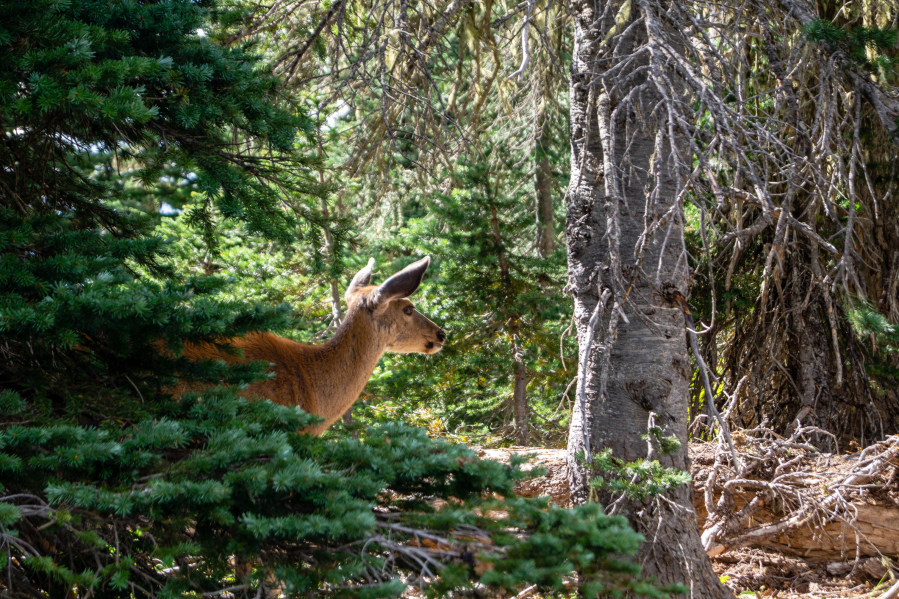SPOKANE — It was a hot and cloudless day when Taylor Ganz found the dead deer, its fly-ridden corpse already pungent in the August heat. Neither fact discouraged Ganz, a Ph.D. student at the University of Washington who was there, much like a detective in a homicide case, to figure out the how, the when, the why, and most importantly, the who of this death.
“I’m always hesitant to even state my first impression, because I don’t want to ultimately bias the decisions,” she said in 2020 as she examined every inch of the forest around the dead cervid. The corpse was neatly stored and covered in needles — classic cougar behavior — but Ganz is a scientist, and so she refused to jump to conclusions.
“Right now, we’re looking at the big picture,” she said. “The first thing I noticed was that it was well cached. That’s typical of felids.”
She investigated outward from the doe’s corpse, looking for drag marks, prints, or fur. She stopped and picked up some tufts of grayish fur, then took a strand and squeezed the ends together, watching the fine hair arc, bending but not folding, a telltale sign that this is predator hair. Ungulates have hollow hairs that keep them warm. When folded, they bend into sharp right angles. She measured bite marks and deconstructed the deer, skinning it, noting broken bones and cataloging the contents of its four-chambered stomach. She measured the deer’s fat reserves and bone marrow, all to understand how healthy the animal was before its death. It’s a smelly and gory process and after a nearly two-hour investigation Ganz determined the deer had been killed by a cougar.



